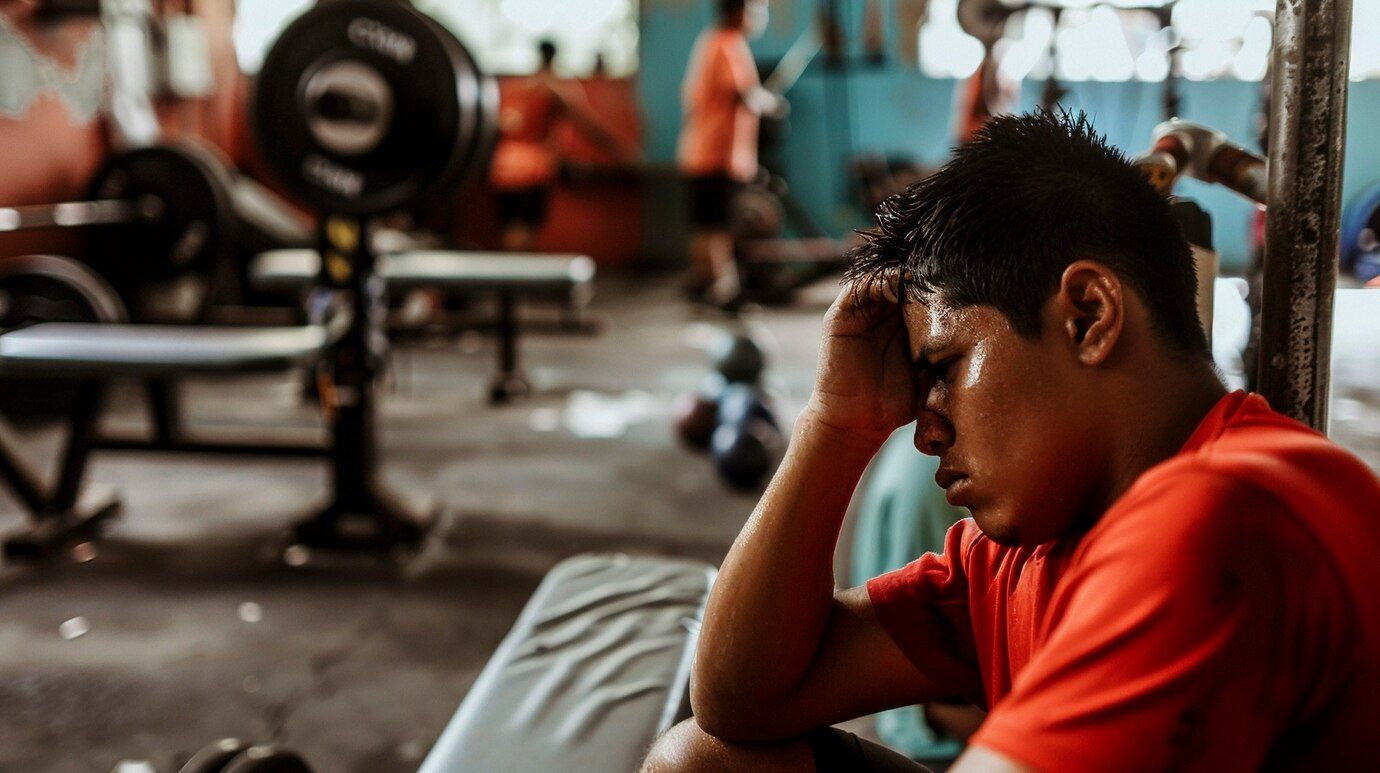Whether you’re watching a game on TV or playing a sport yourself, one thing is clear: athletes put their bodies on the line every day. No matter the sport, there’s always a risk of injury. For professional athletes, these injuries can be more than just physically painful—they can be financially devastating. That’s where injury insurance comes in, helping protect athletes from the financial fallout of an unexpected injury.
In this blog, we’ll take a look at why injury insurance is crucial for athletes, the different types of coverage available, and how having the right plan can help athletes, both professional and amateur, safeguard their health and careers.
Why Athletes Are Prone to Injuries
Athletes, whether they play professionally or recreationally, put immense strain on their bodies. The very nature of sports often demands intense physical exertion, quick movements, and repetitive actions that put muscles, joints, and bones at risk. To gain a deeper understanding of these common injuries, we consulted with AppliedMotion, Wembley’s most popular physiotherapist known for its expertise in sports-related injuries.
Common Injuries in Sports
For example, in high-contact sports like football and rugby, players can suffer from concussions, broken bones, and torn ligaments. AppliedMotion’s specialists noted that these injuries are particularly prevalent due to the high-impact nature of these sports. In basketball or soccer, knee injuries such as ACL tears are all too common. According to AppliedMotion, these injuries are often a result of sudden direction changes and high-impact landings. Tennis and baseball players frequently deal with shoulder or elbow injuries from repetitive strain. These conditions can range from minor strains to severe tears, and recovery times can vary dramatically—from a few weeks of rest to several months of rehabilitation and medical care.
Unpredictable Nature of Injuries
Even with the best preparation and training, injuries are often unpredictable. A misstep, awkward landing, or hard hit can sideline an athlete unexpectedly. AppliedMotion highlighted that even routine training can lead to injuries if not properly managed or if an athlete pushes beyond their limits. It’s not just about the physical toll. For many athletes, getting injured can also be mentally challenging, especially when their livelihood depends on staying in peak physical condition. This unpredictability underscores the importance of having a safety net like injury insurance to provide peace of mind and financial security during recovery.
The Importance of Injury Insurance for Athletes
When an athlete gets injured, the costs can add up quickly. There are medical bills, surgeries, physical therapy, and sometimes long-term rehabilitation. For professional athletes, there’s also the potential loss of earnings, which can be devastating if the injury keeps them off the field or court for an extended period—or worse, ends their career entirely.
Covering Medical and Rehabilitation Costs
One of the biggest reasons injury insurance is so important is that it helps cover the cost of medical treatment. From surgeries to specialist consultations and rehab programs, these expenses can quickly get out of hand. For example, an ACL surgery can cost thousands of dollars, not to mention the months of physical therapy that follow. With insurance, athletes don’t have to bear these financial burdens alone.
Protecting Career Earnings
For professional athletes, their ability to play and perform is directly tied to their income. When an injury happens, it’s not just medical bills they have to worry about—it’s their paycheck. Depending on the sport, athletes can be paid per game, per season, or through performance bonuses. Missing games due to injury can mean missing out on significant earnings.
Injury insurance can help bridge this gap. Policies can provide compensation for the income athletes lose while they’re recovering, helping them maintain their financial stability during tough times. Without this safety net, athletes could face serious financial stress on top of their physical recovery.
Easing the Financial Strain on Teams and Sponsors
It’s not just the athletes who benefit from injury insurance—teams and sponsors do too. When a key player is sidelined due to injury, it can affect a team’s performance, ticket sales, and overall revenue. Teams often have insurance policies in place to protect themselves from the financial fallout of losing a star player. Similarly, sponsors who invest in athletes rely on injury insurance to cover potential losses if an athlete can’t fulfill their contractual obligations due to injury.

Types of Insurance for Athletes
Not all injuries are the same, and not all insurance policies are either. There are different types of injury insurance available, depending on the needs of the athlete and the level of protection they want.
Permanent Disability Insurance
This type of insurance is essential for athletes whose injuries may prevent them from ever returning to their sport. If an athlete suffers a career-ending injury, permanent disability insurance provides them with a lump sum or regular payments to replace the income they would have earned had they been able to continue playing.
For example, imagine a football player who, due to a severe spinal injury, is told they can never play again. Permanent disability insurance would kick in, offering financial support as they transition to life after sports, whether that’s pursuing a new career or managing their long-term medical needs.
Temporary Disability Insurance
Many injuries don’t end an athlete’s career but do require time away from the game to recover. Temporary disability insurance provides coverage for those shorter periods of time when an athlete is unable to compete. This coverage ensures that they receive income while they’re sidelined and focusing on recovery.
Think of it as short-term protection for athletes who, after a few months of rehab, are back in action. It’s a crucial safety net, especially in sports where missing a season could mean losing out on millions in contract or sponsorship earnings.
Medical Coverage
Beyond income protection, injury insurance also includes medical coverage. This covers the cost of surgeries, hospital stays, physical therapy, and other necessary treatments to get the athlete back to full health. Medical bills can quickly spiral out of control, especially in cases where extensive rehabilitation is needed.
With comprehensive medical coverage, athletes don’t have to worry about how they’ll pay for treatments, allowing them to focus fully on their recovery. From the moment they’re injured to their return to the game, having the right medical insurance can make all the difference.
Factors Affecting Insurance Policies for Athletes
When it comes to injury insurance, several factors come into play that can influence the type and cost of coverage an athlete might need. Understanding these factors can help athletes, teams, and sponsors make informed decisions about their insurance options.
Sport Type
The type of sport an athlete participates in is a significant factor in determining insurance premiums and coverage. High-risk sports like football, rugby, and mixed martial arts typically have higher premiums due to the increased likelihood of serious injuries. On the other hand, lower-risk sports such as golf or swimming might have more affordable rates. The nature of the sport directly impacts the risk level, and insurers factor this into their pricing and policy terms.
Age and Health
An athlete’s age and overall health are also crucial considerations. Younger athletes in peak physical condition often benefit from lower premiums because they are statistically less likely to suffer from serious injuries. Conversely, older athletes or those with pre-existing conditions might face higher premiums due to increased risk. Insurers evaluate an athlete’s health history and current fitness level when determining coverage options and costs.
Career Stage
The stage of an athlete’s career can affect their insurance needs. Rising stars or athletes early in their careers might focus on temporary disability coverage to protect against short-term injuries that could impact their earnings. Veterans nearing retirement might need more comprehensive coverage, including permanent disability insurance, to safeguard their long-term financial security. The specific needs and risks associated with an athlete’s career stage play a significant role in shaping their insurance policy.
Insurance Cost
Insurance premiums for athletes can be steep, reflecting the high risks associated with sports. The cost of insurance varies widely based on the sport, the athlete’s health, and the level of coverage. While it may seem like an added expense, having the right insurance is crucial for managing the financial risks of injuries. Athletes should weigh the cost of premiums against the potential financial protection and peace of mind that comes with having comprehensive coverage.

Real-World Examples
To illustrate the importance of injury insurance, let’s look at a few real-world examples of athletes who have benefited from having the right coverage.
Example 1: Professional Football Player
In the NFL, injury insurance plays a vital role. Consider a case where a football player suffers a career-ending injury. With permanent disability insurance, the player is protected from the financial fallout of losing their career and income. This type of coverage can provide a substantial payout, allowing the athlete to manage their financial obligations and focus on their recovery and future endeavors.
Example 2: Olympic Athlete
Olympic athletes, often competing in high-risk sports, also rely on injury insurance. For instance, a skater who suffers a severe injury during the Games may have their medical bills and lost income covered by their insurance policy. This coverage ensures that they can focus on their rehabilitation and return to their sport without the added stress of financial strain.
Example 3: Endorsement Deals
Injury insurance can also impact endorsement deals. Athletes who are sidelined due to injury may not be able to fulfill their promotional commitments. Insurance can help cover the financial losses for sponsors and protect the athlete’s reputation. This aspect of insurance helps maintain strong relationships between athletes and sponsors, ensuring that both parties are safeguarded during unforeseen circumstances.
Conclusion
Injury insurance is a crucial aspect of an athlete’s career, providing financial protection and peace of mind in the face of unexpected injuries. From covering medical expenses to safeguarding income and career longevity, the right insurance policy can make a significant difference in an athlete’s life.
Whether you’re a professional athlete or an amateur enthusiast, understanding the importance of injury insurance is essential. It’s not just about managing risks—it’s about ensuring that you can continue to pursue your passion with confidence, knowing that you’re protected against the financial implications of an injury.
If you’re an athlete, a team manager, or a sponsor, take the time to explore your insurance options and choose a policy that fits your needs. Investing in injury insurance is investing in your future, allowing you to focus on what you do best without worrying about the financial risks associated with injury. Remember, the right coverage can make all the difference in navigating the challenges that come with being an athlete.
